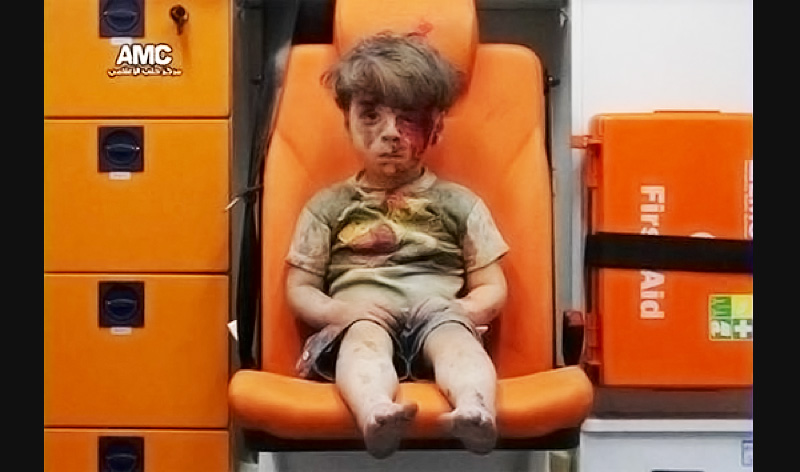
Often more powerful than words, a photo can grip the reader, viewer and social media user.
Three such images often come to mind:
- In 1936, Dorothea Lange’s photo of “Migrant Mother” Florence Thompson and three of her children became an icon for all who struggled to survive America’s Great Depression.
- In 1975, striking images showed mobs of South Vietnamese civilians scaling the 14-foot wall of the U.S. Embassy, and others climbing ladders to board a U.S. helicopter preceding the fall of Saigon.
- Weeks ago, the image of a dazed and bloodied 5-year-old boy in an ambulance became the symbol of suffering. Until then, airstrikes in Syria had been relentless for months, but remained distant to many.
“Pick up today’s papers and you’ll see boring photos. When something crosses over and is really exciting, there’s dramatic news there,” said Tom Clanin, a former photographer, reporter and editor who joined the CSUF staff as a communications lecturer 18 years ago.
The speed of sight
These rare, emotional and iconic images are among the photos discussed by Clanin and other communications faculty members in visual communications, ethics, reporting and editing courses. But, because nearly half the general population in the United States (44 percent, according to Pew Research Center) gets its news from Facebook, it’s the speed and reach of social media that makes this a more pressing conversation for students seeking communications careers.
Because almost all cell phones have cameras, the internet offers the ability to share images to a global audience, said Ed Fink, interim associate dean of communications. “But just because you can take a picture of anything and post it, doesn’t mean you should, especially when you understand how powerful an image can be,” he said.
“Now you can see people being shot by police instantly all over the country,” said Bonnie Stewart, communications lecturer and Daily Titan adviser. “People are collecting their news more visually now than just in print. Those images are always going to contain power, but the reach is far greater now.”
Communications students learn to evaluate each image, using a code of ethics to find and tell the truth. They’re taught to ask themselves if they have a legitimate source for information and how they can minimize harm, Stewart said.
“The Oklahoma City bombing photo [a firefighter cradling a lifeless infant from the rubble] did more good than harm. It showed us, in human terms, what happened that day rather than a building’s collapse,” Clanin said. “Editors got a lot of flak for that photo, or any photo of children in distress, but the consensus in the news media was that photo was the iconic photo.”
Teaching responsibility
“As future journalists, our students will make decisions about whether to share such images with the public. Journalism educators need to be responsible in discussing how to make ethical decisions of all kinds in their work,” said Frank Russell, assistant professor of communications, and a former editor for the San Jose Mercury News and Seattle Times.
The activist group Aleppo Media Center released a video and a photo of Omran Daqneesh — the boy in the ambulance — and in hours, the image was shared and retweeted thousands of times. The boy became the new face of a call to end the bloodshed.
Within days of the appearance of the “Migrant Mother” photo in the San Francisco News, the federal government sent 20,000 pounds of food to the 2,500 to 3,500 migrant workers starving in a Nipomo pea-picker camp. Eighty years later, Paul Lester, a longtime CSUF professor of communications, now a lecturer, is working to secure funding for a plaque commemorating Lange’s historic photo in a park near the original site.
“People shouldn’t be afraid of their reality,” said Clanin. “It’s good to shake them from their complacency and comfort zones.”